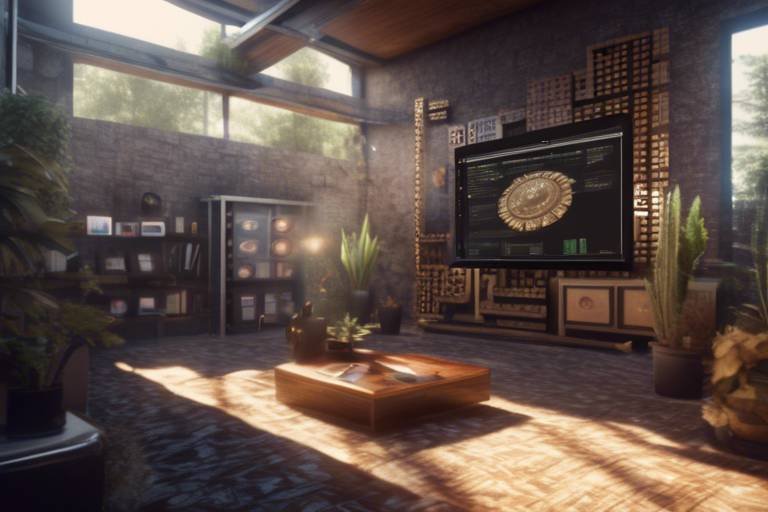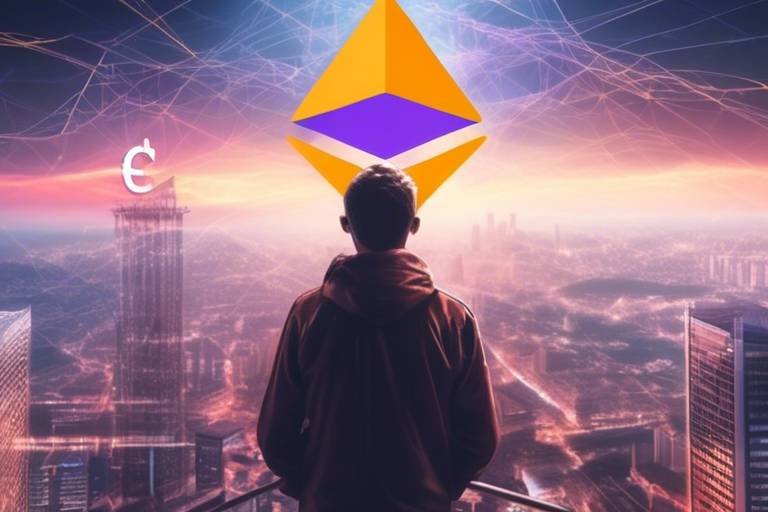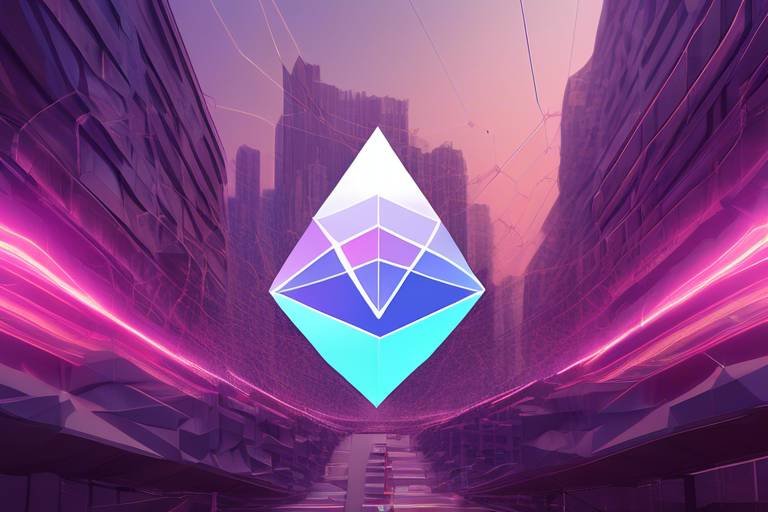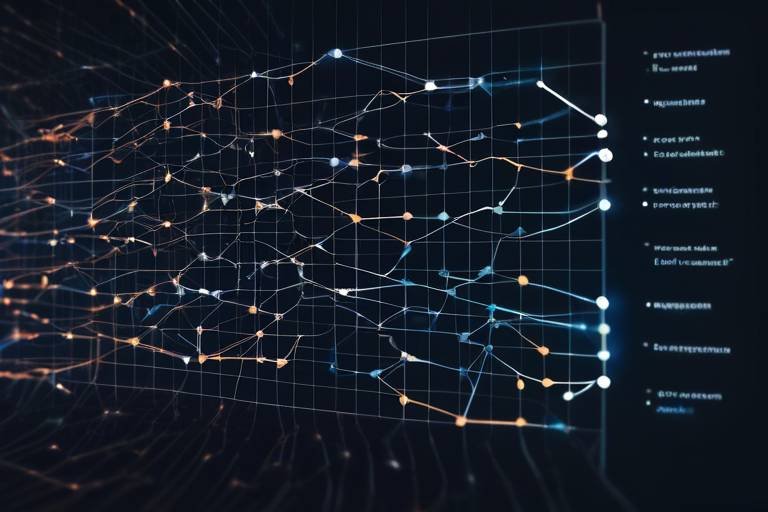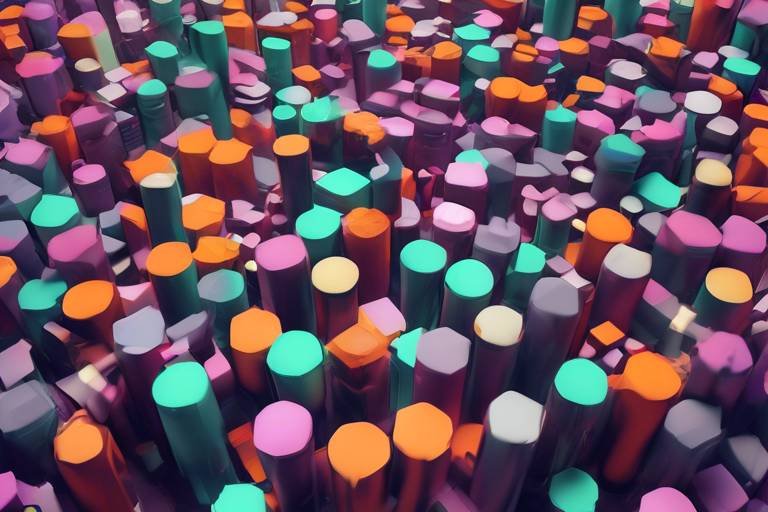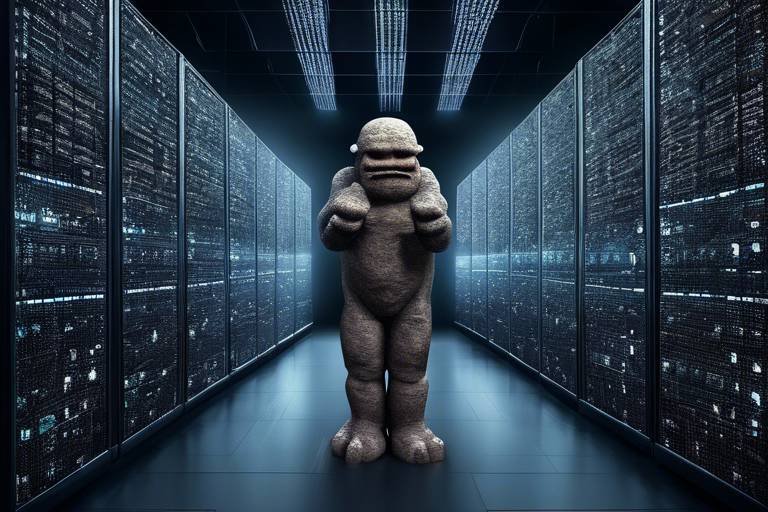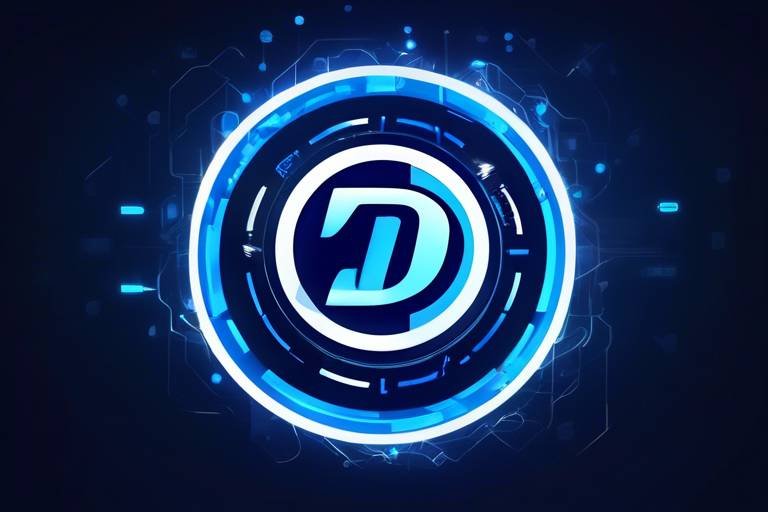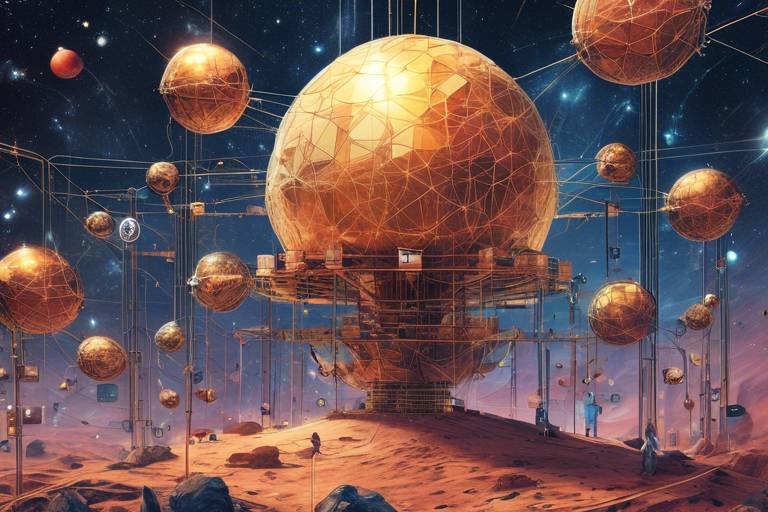Render Token - GPU-Powered Rendering Explained
The world of digital rendering has undergone a **significant transformation** with the introduction of Render Token, a groundbreaking concept that leverages the power of Graphics Processing Units (GPUs) to enhance rendering efficiency and quality. Imagine a bustling city where every vehicle represents a piece of data, and Render Token is the traffic system that optimally directs each vehicle to its destination. This innovative approach not only streamlines the rendering process but also ensures that resources are allocated efficiently, leading to faster and more visually stunning results. In this article, we will explore the intricacies of Render Token, its relationship with GPU technology, and how it is revolutionizing various applications in today’s digital landscape.
At its core, **Render Token** is a mechanism designed to optimize the rendering workflow by enabling **efficient resource allocation** and management. Think of it as a smart assistant that organizes your tasks, ensuring that the most important ones get done first. This concept is particularly crucial in the realm of GPU rendering, where the demand for speed and quality is ever-increasing. Render Token operates on fundamental principles that allow it to maximize the potential of GPUs, ensuring that rendering tasks are executed with **minimal lag** and **maximum fidelity**.
Graphics Processing Units, or GPUs, are the unsung heroes of modern rendering processes. These powerful chips are specifically designed to handle complex calculations needed for rendering graphics, making them indispensable in a variety of applications, from gaming to architectural visualization. When you think about it, GPUs are like the engines of a high-performance car, propelling the rendering process forward at incredible speeds. They enhance rendering speed and quality by distributing tasks across multiple cores, allowing for a more fluid and efficient workflow.
The architecture of GPUs is a marvel of modern engineering, built for **parallel processing**. This design enables GPUs to tackle multiple tasks simultaneously, which is a game-changer in the rendering pipeline. Imagine trying to cook a multi-course meal; if you could have several chefs working on different dishes at the same time, dinner would be served much faster! In the same way, GPUs can process numerous rendering tasks simultaneously, significantly boosting performance. Key components of GPU architecture include:
| Component | Function |
|---|---|
| CUDA Cores | Perform calculations and process graphics data. |
| Memory (VRAM) | Stores textures and frame buffers for quick access. |
| Shader Units | Handle the rendering of effects and lighting. |
The advantages of parallel processing in GPUs are profound. By allowing multiple calculations to occur at once, rendering times are drastically reduced. This means that artists and developers can focus more on creativity rather than waiting for their work to render. In practical applications, this leads to:
- Faster turnaround times for projects
- Increased productivity for artists and developers
- Enhanced ability to work with complex scenes and high-resolution textures
Efficient memory management is another critical aspect of GPU performance. Just like a well-organized closet makes it easier to find your clothes, effective memory allocation helps ensure that rendering tasks are executed smoothly. In real-time applications, how memory is allocated can significantly impact rendering speed and quality. For instance, if a GPU runs out of memory while rendering a scene, it can lead to delays or even crashes, disrupting the entire workflow.
Rendering techniques vary widely, each utilizing GPU power in unique ways. Two of the most popular methods are **ray tracing** and **rasterization**. Ray tracing simulates the way light interacts with objects, producing stunningly realistic images, while rasterization is a more traditional method that focuses on converting 3D models into 2D images. Both techniques have their strengths and weaknesses, and the choice between them often depends on the specific requirements of a project.
Implementing Render Token in rendering workflows offers a plethora of advantages. Not only does it enhance the efficiency of the rendering process, but it also improves the overall quality of the output. Let’s break down some of the key benefits:
One of the most significant advantages of Render Token is its potential for **cost efficiency**. By optimizing resource usage, it can reduce operational expenses associated with rendering processes. This is particularly beneficial for studios and companies that rely heavily on rendering for their projects. Think of it as a way to get more bang for your buck, allowing you to allocate your budget more effectively while still achieving high-quality results.
With Render Token, the quality of rendered images sees a marked improvement. This technology enhances the fidelity and realism of graphics, making it possible to produce stunning visuals that captivate audiences. Whether it’s for gaming, film, or architectural visualization, having high-quality renders can make all the difference in how a project is perceived.
The future of GPU rendering is bright, with continuous advancements in technology paving the way for exciting innovations. As we look ahead, it’s clear that the landscape of rendering will evolve significantly, driven by emerging technologies.
Technologies such as **AI** and **machine learning** are poised to revolutionize GPU rendering. Imagine a rendering system that learns from previous projects to optimize future outputs—this is not just a fantasy but a potential reality. The implications for the rendering landscape are vast, offering new possibilities for automation and enhanced creativity.
The impact of GPU rendering on various industries is profound. Sectors like gaming, film, and architecture are transforming due to these advancements, leading to more immersive experiences and stunning visual storytelling. As technology continues to evolve, we can expect to see even more innovative applications of GPU rendering that push the boundaries of what’s possible.
1. What is Render Token?
Render Token is a mechanism that optimizes rendering workflows by enabling efficient resource allocation and management, particularly in GPU rendering.
2. How do GPUs enhance rendering?
GPUs enhance rendering by allowing parallel processing, which significantly speeds up the rendering process and improves quality.
3. What are the benefits of using Render Token?
Key benefits include cost efficiency, improved rendering quality, and faster turnaround times for projects.
4. What future technologies will impact GPU rendering?
Emerging technologies such as AI and machine learning are expected to revolutionize GPU rendering, leading to more efficient workflows and enhanced creativity.

Understanding Render Token
Render Token is an innovative concept that has emerged in the world of GPU rendering, designed to optimize the way resources are allocated and managed during the rendering process. At its core, Render Token acts as a smart mediator between rendering tasks and GPU resources, ensuring that every ounce of processing power is utilized effectively. Imagine a traffic controller directing cars at a busy intersection; Render Token ensures that data flows smoothly, preventing bottlenecks and maximizing throughput.
The fundamental principle behind Render Token lies in its ability to prioritize tasks based on their urgency and complexity. By doing so, it significantly reduces idle time and enhances overall efficiency. When rendering a complex scene, for example, some elements may require more computational resources than others. Render Token intelligently allocates GPU power to these high-demand tasks while ensuring that less critical elements do not hog resources. This dynamic allocation not only speeds up the rendering process but also improves the overall quality of the final output.
Another essential aspect of Render Token is its compatibility with various rendering engines and frameworks. Whether you’re using industry-standard software like Autodesk Maya, Blender, or cutting-edge game engines like Unreal Engine, Render Token can seamlessly integrate into your workflow. This adaptability makes it a versatile tool for artists and developers alike, allowing them to focus on creativity rather than getting bogged down by technical limitations.
To give you a clearer picture, let’s break down the key functionalities of Render Token:
- Task Prioritization: By assessing the needs of each rendering task, Render Token can prioritize them accordingly, leading to faster render times.
- Resource Optimization: It ensures that GPU resources are allocated efficiently, preventing any resources from being wasted.
- Real-time Adjustments: Render Token can make adjustments on the fly, adapting to changes in the rendering workload dynamically.
Overall, Render Token is a game-changer in the rendering landscape, making it easier for professionals to achieve high-quality results without the extended wait times typically associated with complex rendering tasks. As we delve deeper into the world of GPU rendering, understanding the significance of Render Token becomes crucial for anyone looking to leverage the full potential of modern graphics technology.

The Role of GPUs in Rendering
When we talk about rendering in the world of graphics, we can't overlook the pivotal role of Graphics Processing Units (GPUs). These powerful processors are designed specifically to handle complex calculations required for rendering images, animations, and visual effects. Unlike traditional CPUs, which are optimized for general tasks, GPUs excel in parallel processing, enabling them to tackle multiple rendering tasks simultaneously. This capability is what makes them indispensable in modern graphics applications, from video games to film production.
Imagine trying to paint a massive mural with just one small brush. It would take forever, right? Now, picture having a whole team of artists, each with their own brush, working together to create the mural. This is essentially how GPUs function in rendering. They distribute the workload across thousands of tiny cores, allowing them to process vast amounts of data at lightning speed. This is why rendering times have drastically decreased in recent years, enabling creators to produce high-quality visuals more efficiently.
The speed and efficiency of GPUs have transformed the rendering landscape. For instance, in the realm of gaming, GPUs allow for real-time rendering, where players can experience immersive environments without lag. This is achieved through advanced techniques that leverage the GPU's architecture, such as shader programs and texture mapping. These techniques enhance the visual fidelity of games, making them more lifelike and engaging.
The architecture of GPUs is built around a design that emphasizes parallel processing. Each GPU consists of numerous cores that work together to render images. This design is a game-changer; it allows for the simultaneous execution of multiple threads, significantly boosting rendering performance. In fact, modern GPUs can have thousands of cores, each capable of executing its own tasks independently, which is a stark contrast to CPUs that typically have fewer cores optimized for sequential processing.
The advantages of parallel processing in GPUs are numerous. By distributing tasks across many cores, GPUs can handle complex rendering algorithms much faster than traditional methods. This means that artists and developers can achieve high-quality results in less time. For example, rendering a scene that might have taken hours on a CPU can often be completed in minutes on a GPU. This efficiency not only saves time but also reduces costs associated with rendering workflows.
Another critical aspect of GPU performance is memory management. Efficient memory allocation is vital for rendering speed and quality, especially in real-time applications. GPUs utilize dedicated memory (VRAM) that allows for faster access to textures and frame buffers, which are essential for rendering high-resolution images. Without proper memory management, rendering processes can become bottlenecked, leading to longer wait times and lower quality outputs.
In summary, GPUs play an integral role in the rendering process, from enhancing speed and quality to enabling complex visual effects. Their architecture and ability to manage resources efficiently make them the backbone of modern graphics rendering. As technology continues to advance, the capabilities of GPUs will only expand, further revolutionizing how we create and experience visual content.
- What is a GPU? A Graphics Processing Unit (GPU) is a specialized processor designed to accelerate graphics rendering and perform complex calculations required for visual output.
- How do GPUs improve rendering speed? GPUs can process many tasks simultaneously due to their parallel architecture, allowing for faster rendering times compared to traditional CPUs.
- What are some common applications of GPUs? GPUs are widely used in gaming, film production, architectural visualization, and any application that requires high-quality graphics.
- What is the difference between ray tracing and rasterization? Ray tracing simulates how light interacts with objects to produce realistic images, while rasterization converts 3D models into 2D images quickly but with less realism.

GPU Architecture
The architecture of Graphics Processing Units (GPUs) is a marvel of modern technology, specifically designed to handle the complex demands of rendering graphics. At its core, the GPU is built to perform parallel processing, which means it can execute multiple operations simultaneously. This is crucial for rendering high-quality images in real-time, as it allows for a more efficient use of resources compared to traditional CPUs. Imagine trying to paint a massive mural by yourself—it's a daunting task! Now, picture a team of artists working on different sections at the same time. That’s how GPUs operate, breaking down the rendering process into manageable chunks, leading to faster and more efficient results.
One of the key components of GPU architecture is the streaming multiprocessor (SM). Each SM is capable of handling numerous threads, which allows for the execution of thousands of operations concurrently. This design is what makes GPUs so powerful for rendering tasks. Additionally, GPUs are equipped with specialized memory structures, such as texture memory and framebuffer memory, which are optimized for the rapid access and manipulation of graphical data. The combination of these components means that GPUs can manage complex calculations that are essential for rendering detailed images.
To further illustrate, let’s break down the architecture into its fundamental parts:
- Core Units: These are the basic processing units that perform the calculations necessary for rendering.
- Memory Interfaces: These allow the GPU to communicate with its memory, ensuring data is transferred quickly and efficiently.
- Cache Hierarchy: Caches store frequently accessed data to speed up processing times, minimizing delays.
- Rasterizer: This component converts vector graphics into raster images, which are crucial for display.
Moreover, the architecture supports advanced features like real-time ray tracing, which simulates how light interacts with objects to produce photorealistic images. This technology is increasingly becoming a standard in rendering, showcasing the GPU's ability to not only enhance speed but also improve the overall quality of output. The evolution of GPU architecture continues to push the boundaries of what is possible in graphics rendering, making it an exciting area to watch as technology advances.
In conclusion, the architecture of GPUs is a sophisticated blend of various components working in harmony to achieve remarkable rendering capabilities. As we move forward, it’s fascinating to think about how these innovations will continue to shape the digital landscape, enhancing everything from video games to cinematic experiences.

Parallel Processing Advantages
When it comes to rendering, the concept of parallel processing is a game changer. Imagine trying to complete a massive jigsaw puzzle all by yourself—it's going to take a lot of time, right? Now, picture having a whole team of friends working with you, each tackling different sections of the puzzle simultaneously. That's essentially how parallel processing works in the realm of Graphics Processing Units (GPUs). By distributing tasks across multiple cores, GPUs can process vast amounts of data at lightning speed, drastically reducing rendering times.
One of the most significant advantages of parallel processing is its ability to enhance the efficiency of rendering workflows. In traditional rendering systems, tasks are often executed sequentially, meaning one task has to finish before the next one can start. This can lead to bottlenecks and delays, especially when dealing with complex scenes or high-resolution images. However, with parallel processing, multiple rendering tasks can occur at the same time, leading to a smoother and faster rendering experience.
Let's break down some key benefits of this technology:
- Speed: By utilizing multiple cores, GPUs can significantly cut down rendering time. This is particularly crucial for industries like film and gaming, where time is often of the essence.
- Scalability: As projects grow in complexity, the ability to scale up processing power becomes vital. Parallel processing allows for easy scalability, accommodating larger and more intricate rendering tasks without compromising performance.
- Resource Optimization: With parallel processing, the workload is balanced across the GPU's cores, leading to more efficient use of resources. This optimization not only enhances speed but also reduces energy consumption.
In practical applications, this means that artists and developers can work more efficiently, allowing for faster iterations and quicker feedback loops. For instance, in the world of video game development, artists can see their designs rendered in real-time, making adjustments on the fly rather than waiting for lengthy rendering processes to complete. This immediacy not only fosters creativity but also enhances collaboration among team members.
Moreover, as technology continues to advance, we can expect even more sophisticated forms of parallel processing to emerge. Innovations like ray tracing and deep learning are beginning to leverage these advantages, pushing the boundaries of what's possible in rendering. As we look to the future, it's clear that parallel processing will remain a cornerstone of GPU rendering, continually reshaping how we create and experience digital content.
- What is parallel processing? Parallel processing is the simultaneous execution of multiple tasks or processes across multiple computing resources, significantly speeding up computation times.
- How does parallel processing benefit rendering? It allows for faster rendering times, improved resource utilization, and the capability to handle more complex tasks without performance degradation.
- Can all applications benefit from parallel processing? While many applications can benefit, the extent of the advantage depends on the specific tasks and how well they can be divided into parallelizable components.

Memory Management
When it comes to GPU rendering, is not just a technical detail; it's the backbone of performance and efficiency. Think of it like the conductor of an orchestra, ensuring that every instrument plays in harmony. Without proper memory allocation, the entire rendering process can hit a sour note, leading to lag and subpar quality. So, how does memory management work in the context of GPUs?
At its core, memory management involves the organization and optimization of memory resources to ensure that the GPU can access and process data swiftly. This is crucial because rendering involves handling large amounts of graphical data, which can be incredibly demanding. If the GPU doesn't have quick access to the necessary memory, it can slow down the rendering process significantly.
One key aspect of effective memory management is memory allocation. This refers to the way in which memory is assigned to various tasks during the rendering process. For instance, when rendering a complex scene in a video game, the GPU needs to allocate memory for textures, models, and lighting effects. If memory isn't allocated efficiently, the GPU may struggle to keep up with the demands of real-time rendering, leading to frame drops and visual artifacts.
Moreover, different rendering techniques have varying memory requirements. For example, ray tracing, which simulates the way light interacts with objects, can be particularly memory-intensive. In contrast, rasterization, which converts 3D models into 2D images, typically requires less memory. Understanding these differences is essential for optimizing memory usage in different applications.
To illustrate the impact of memory management on rendering performance, consider the following table:
| Rendering Technique | Memory Requirement | Performance Impact |
|---|---|---|
| Ray Tracing | High | Potential for lag if memory is not managed |
| Rasterization | Moderate | Generally smooth performance |
| Hybrid Rendering | Varies | Depends on memory allocation strategy |
In addition to allocation, memory bandwidth plays a significant role in memory management. This refers to the amount of data that can be read from or written to the GPU's memory in a given time frame. Higher memory bandwidth means that the GPU can access data more quickly, which is vital for maintaining high frame rates and rendering quality, especially in demanding applications like virtual reality or high-end gaming.
Ultimately, effective memory management is about striking a balance. It's about ensuring that the GPU has enough memory to perform its tasks without overwhelming it. By optimizing memory allocation and bandwidth, developers can enhance the overall rendering experience, leading to smoother graphics and more immersive environments. So, the next time you marvel at stunning graphics in a game or movie, remember that behind the scenes, memory management is working tirelessly to make it all possible.
- What is the importance of memory management in GPU rendering? Memory management is crucial as it ensures that the GPU can efficiently access and process the large amounts of data involved in rendering, leading to better performance and quality.
- How does memory allocation affect rendering speed? Efficient memory allocation allows the GPU to quickly access the necessary resources, reducing lag and improving rendering speed.
- What are the differences between ray tracing and rasterization in terms of memory usage? Ray tracing typically requires more memory due to its complex calculations for simulating light, while rasterization is generally less demanding.
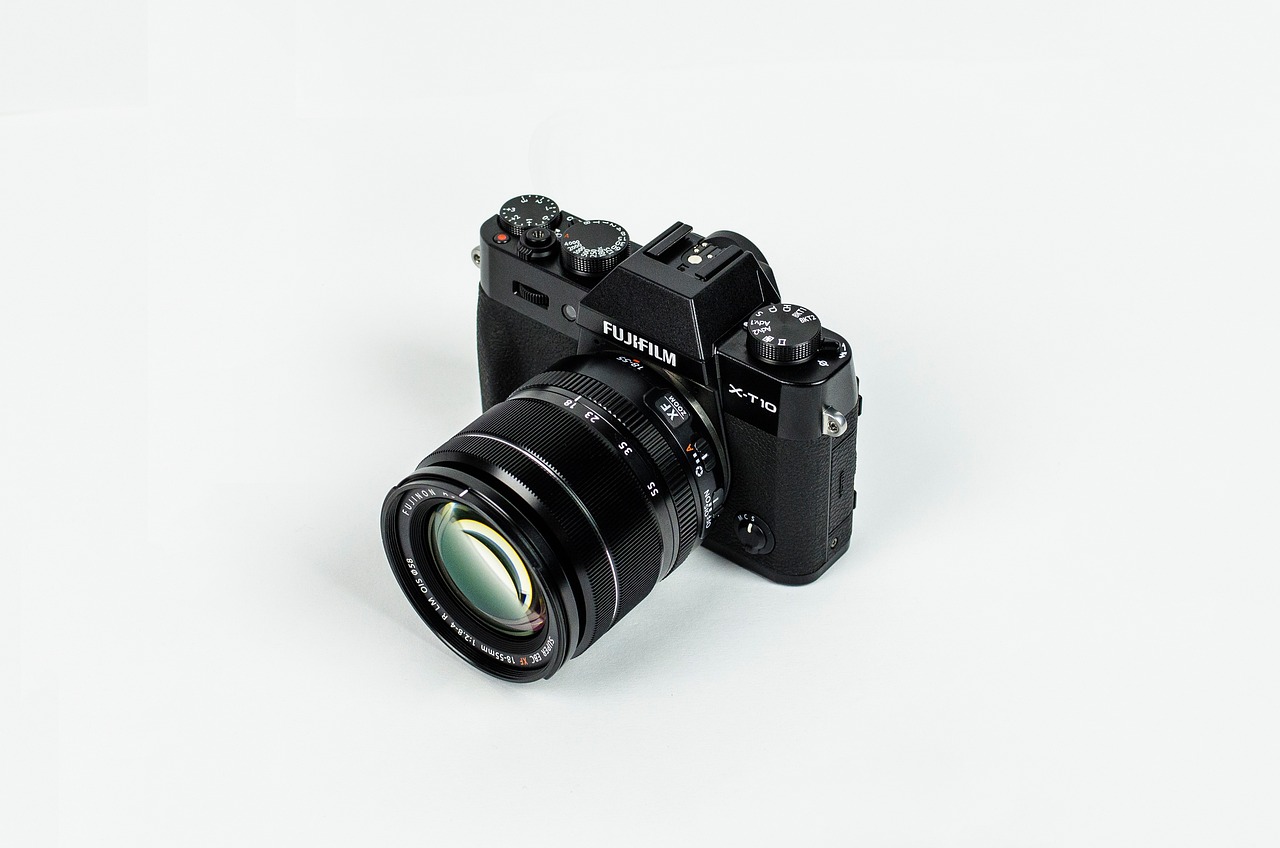
Rendering Techniques
When it comes to rendering, the techniques employed can make all the difference in the final output. There are two primary methods that dominate the landscape: ray tracing and rasterization. Each technique has its unique strengths and is suited for different applications. Let's dive deeper into these methodologies to understand how they work and why they matter.
Ray tracing is often hailed as the gold standard in rendering quality. This technique simulates the way light interacts with objects in a virtual environment by tracing the path of rays as they travel from the camera to the light source. Imagine shining a flashlight in a dark room; the way the light bounces off surfaces and creates shadows is akin to how ray tracing operates. The result? Stunningly realistic images with intricate lighting effects, reflections, and shadows that can elevate any visual project. However, this level of detail comes at a cost: ray tracing is computationally intensive and can be slower than other methods, which is why it's often reserved for high-end applications like film and architectural visualization.
On the other hand, we have rasterization, which is the workhorse of real-time rendering, especially in the world of video games. Rasterization converts 3D models into a 2D image by projecting the vertices of the model onto a screen. Think of it as taking a photograph of a three-dimensional object: the camera captures the image, but it doesn't account for the intricate details of how light behaves. While rasterization may lack the photorealism of ray tracing, it excels in speed and efficiency, making it the go-to choice for interactive applications where frame rates are crucial. This technique is capable of producing visually appealing graphics quickly, allowing users to enjoy a seamless experience.
To put it simply, the choice between ray tracing and rasterization often boils down to the specific requirements of a project. For example, a video game might prioritize frame rates and responsiveness, making rasterization the ideal choice, while a film studio may opt for ray tracing to achieve breathtaking visuals. It's also worth noting that the industry is witnessing a convergence of these techniques. Hybrid rendering approaches are emerging, combining the strengths of both methods to deliver high-quality visuals without sacrificing performance.
As we continue to explore the potential of GPU rendering, it's clear that the evolution of rendering techniques will play a critical role in shaping the future of graphics. With advancements in technology, we can expect to see even more innovative methods that push the boundaries of what's possible in visual storytelling.
- What is the main difference between ray tracing and rasterization?
Ray tracing simulates the behavior of light for more realistic images, while rasterization quickly converts 3D models into 2D images, prioritizing speed. - Can I use both techniques in a single project?
Yes, many modern rendering engines utilize a hybrid approach to combine the benefits of both ray tracing and rasterization. - Why is ray tracing so resource-intensive?
Ray tracing requires complex calculations for light interactions, which demand significant computational power, especially for real-time applications. - What industries benefit from advanced rendering techniques?
Industries such as gaming, film, architecture, and virtual reality heavily rely on sophisticated rendering techniques to create immersive experiences.
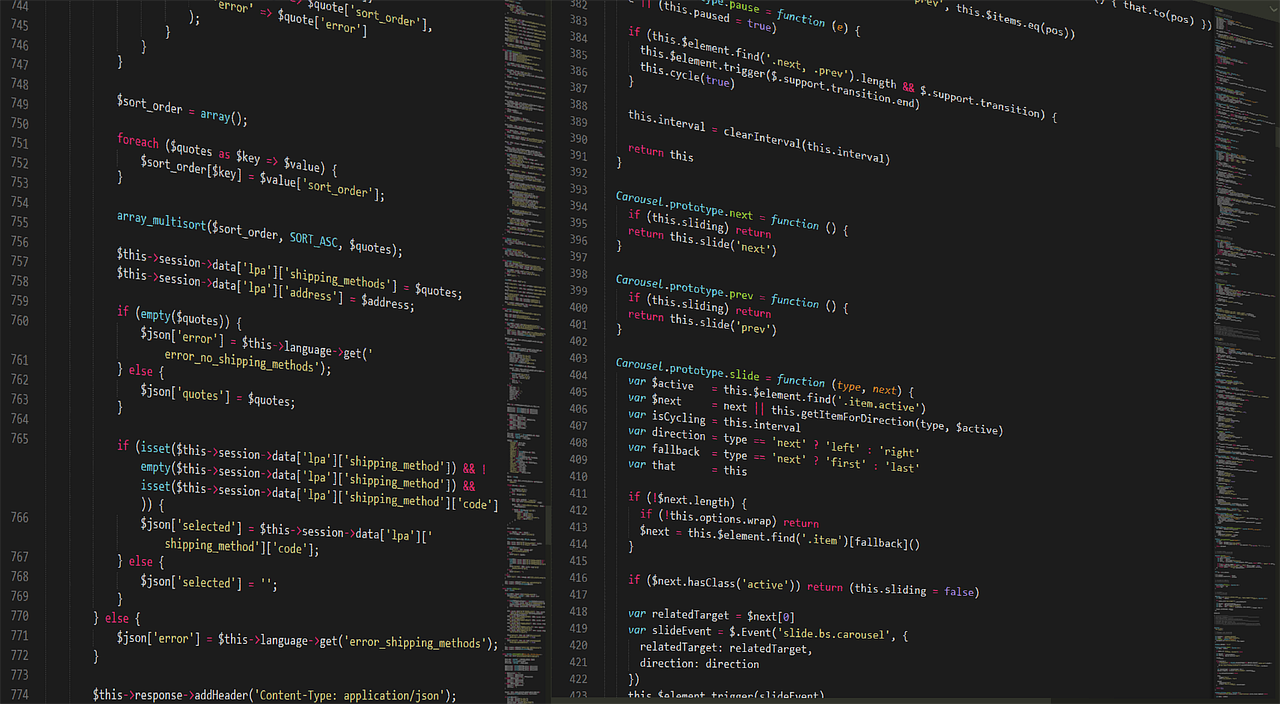
Benefits of Using Render Token
Implementing Render Token in rendering workflows is like adding a turbocharger to your vehicle; it not only enhances performance but also optimizes overall efficiency. One of the most significant benefits of Render Token is its ability to streamline resource allocation. By utilizing this technology, rendering processes can dynamically allocate GPU resources, ensuring that every ounce of power is used effectively. This means that artists and developers can focus more on creativity rather than being bogged down by technical limitations.
Another compelling advantage is cost efficiency. Traditional rendering methods often lead to wasted resources and inflated operational costs. Render Token addresses this issue by optimizing the rendering pipeline, which can significantly reduce the time and energy spent on rendering tasks. Imagine being able to cut your rendering costs in half while simultaneously increasing output quality; that’s the power of Render Token!
Moreover, the quality of rendered images sees a remarkable improvement with the adoption of Render Token. By leveraging advanced algorithms and efficient resource management, Render Token can produce higher fidelity graphics that are not only visually stunning but also more realistic. This enhancement in quality is particularly beneficial in fields like gaming and film, where visual appeal is paramount. It allows creators to push the boundaries of what’s possible, resulting in graphics that can captivate audiences and enhance storytelling.
In addition to these benefits, Render Token also facilitates collaboration among teams. With its efficient management of rendering tasks, multiple users can work on different aspects of a project simultaneously without experiencing significant delays. This collaborative environment fosters creativity and innovation, allowing teams to produce high-quality work in less time. Imagine a scenario where artists, animators, and developers can work in parallel, each contributing their expertise without stepping on each other's toes; that’s the collaborative magic that Render Token brings to the table.
To summarize, the benefits of using Render Token extend beyond mere efficiency. They encompass cost savings, improved quality, and enhanced collaboration, making it a game-changer in the rendering landscape. As the demand for high-quality graphics continues to grow, embracing technologies like Render Token will be crucial for staying ahead of the curve.
- What is Render Token? Render Token is a technology that allows for efficient resource allocation and management in GPU-powered rendering processes.
- How does Render Token improve rendering quality? By optimizing resource usage and employing advanced algorithms, Render Token enhances the fidelity and realism of rendered images.
- Can Render Token reduce rendering costs? Yes, Render Token can significantly lower operational expenses by streamlining the rendering pipeline and minimizing wasted resources.
- Is Render Token suitable for collaborative projects? Absolutely! Render Token facilitates collaboration among teams by allowing multiple users to work on different tasks simultaneously without delays.
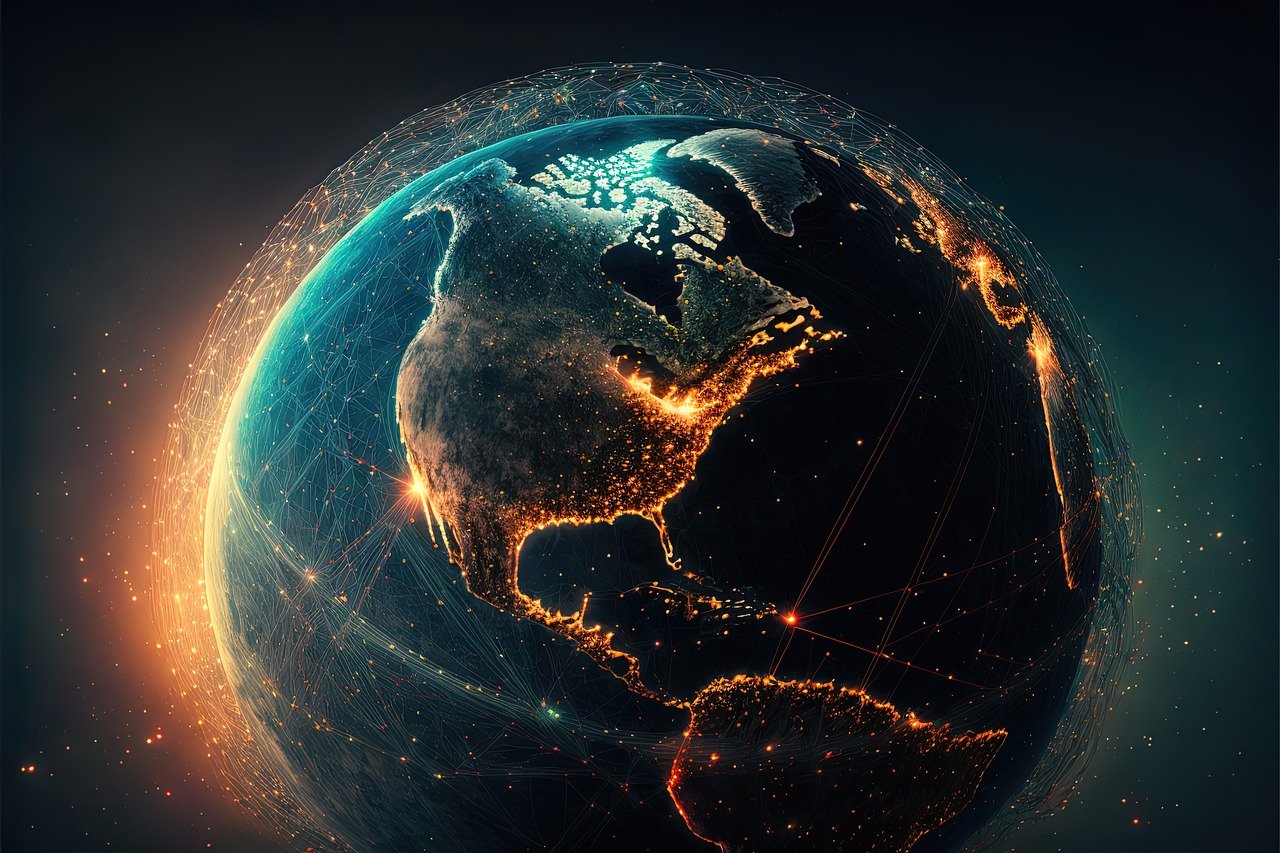
Cost Efficiency
When it comes to rendering processes, is a game changer. Imagine having the ability to produce stunning graphics without breaking the bank. That's where Render Token steps in, optimizing resource usage and significantly lowering operational expenses. By leveraging the power of GPU rendering, Render Token ensures that every ounce of computational power is utilized effectively, minimizing waste and maximizing output.
One of the key ways Render Token achieves this is through its intelligent allocation of rendering tasks. Instead of relying on a single, overloaded GPU, Render Token distributes the workload across multiple GPUs in a network. This distributed rendering approach not only speeds up the rendering process but also reduces the need for expensive, high-end hardware for every workstation. Think of it as sharing the load among friends during a heavy lifting task; it becomes much easier and more efficient.
Moreover, the integration of Render Token can lead to substantial savings in energy costs. Since GPUs are designed for parallel processing, they can complete tasks faster and more efficiently than traditional CPUs. This means that projects can be rendered in less time, resulting in lower electricity bills. In fact, studies have shown that companies implementing GPU-powered rendering solutions can see a reduction in energy consumption by up to 30% compared to conventional methods.
To illustrate the financial benefits of adopting Render Token in rendering workflows, consider the following table:
| Rendering Method | Time Taken (Hours) | Cost Estimate ($) | Energy Consumption (kWh) |
|---|---|---|---|
| Traditional CPU Rendering | 10 | 500 | 50 |
| GPU Rendering with Render Token | 4 | 200 | 20 |
This table clearly demonstrates the stark difference in both time and cost when utilizing Render Token for GPU rendering. The cost reduction is not only evident in direct expenses but also in the overall efficiency of the workflow. Companies can allocate their resources more wisely, investing the savings into other critical areas of their projects, such as enhancing creativity or expanding their teams.
In conclusion, Render Token not only streamlines the rendering process but also brings a wealth of financial benefits. The ability to reduce costs while improving rendering speed and quality is a win-win situation for any organization looking to stay competitive in today's fast-paced digital landscape. So, if you're still relying on outdated methods, it might be time to consider making the switch and embracing the future of rendering.
- What is Render Token? Render Token is a system that optimizes GPU rendering by efficiently managing and allocating resources across multiple GPUs.
- How does Render Token improve cost efficiency? By distributing rendering tasks, Render Token reduces the need for high-end hardware and minimizes energy consumption, leading to significant cost savings.
- Can Render Token be used in real-time applications? Yes, Render Token is designed to enhance rendering speed and quality, making it suitable for various real-time applications.
- What industries benefit from Render Token? Industries such as gaming, film, and architecture are among those that can significantly benefit from the advancements offered by Render Token.

Improved Quality
When it comes to rendering graphics, quality is king. With the advent of Render Token, the ability to produce stunningly realistic images has reached new heights. Imagine being able to visualize a scene with such clarity that you can almost feel the texture of surfaces or the subtleties of light and shadow. Render Token achieves this by leveraging the immense power of GPUs, which are designed to handle complex calculations at lightning speed. This technology not only enhances the visual fidelity but also allows artists and developers to push the boundaries of creativity.
One of the key factors in achieving improved quality is the precision with which Render Token processes data. The rendering pipeline benefits from advanced algorithms that optimize how light interacts with objects in a scene. For instance, techniques like ray tracing simulate the way light behaves in the real world, resulting in images that are not only beautiful but also true to life. This method calculates reflections, refractions, and shadows in a way that traditional rasterization techniques simply cannot match.
Moreover, Render Token's architecture supports high dynamic range (HDR) rendering, which means that it can display a wider range of colors and brightness levels. This capability is crucial for creating immersive environments, particularly in gaming and virtual reality, where the goal is to transport users to another world. The difference is palpable; scenes rendered with HDR exhibit vibrant colors and deep contrasts that draw viewers in, making them feel as though they are part of the action.
In addition to these technical advantages, Render Token also streamlines the workflow for artists and developers. By allowing for real-time feedback, creators can see changes instantly, leading to quicker iterations and a more fluid creative process. This means that artists can focus on what they do best—creating stunning visuals—without getting bogged down by lengthy rendering times. The result? A more efficient production pipeline that ultimately leads to higher quality outputs.
To sum it up, Render Token is not just a tool; it’s a game-changer in the world of rendering. By enhancing quality through advanced algorithms, HDR capabilities, and real-time feedback, it empowers creators to produce breathtaking visuals that captivate audiences. As technology continues to evolve, we can only imagine the heights that will be reached in the realm of graphics, thanks to innovations like Render Token.
- What is Render Token? - Render Token is a technology that optimizes rendering workflows by leveraging GPU power for efficient resource management.
- How does Render Token improve rendering quality? - It enhances quality through advanced algorithms, HDR rendering, and real-time feedback, allowing for more realistic images.
- Can Render Token be used in real-time applications? - Yes, Render Token is designed to provide real-time rendering capabilities, making it ideal for gaming and virtual reality.
- What industries benefit from Render Token? - Industries such as gaming, film, and architecture are significantly impacted by the advancements in GPU rendering technologies.

Future of GPU Rendering
The future of GPU rendering is not just bright; it's practically glowing with potential! As technology advances at an unprecedented pace, we find ourselves on the brink of a rendering revolution. Imagine a world where rendering is instantaneous, images are hyper-realistic, and the limitations of current technology are mere memories. This is the exciting future that awaits us, driven by innovations in artificial intelligence and machine learning.
Emerging technologies are reshaping the landscape of GPU rendering. With AI algorithms becoming more sophisticated, we can expect a significant enhancement in rendering capabilities. For instance, AI can streamline the rendering pipeline by predicting the best rendering paths, optimizing resource allocation, and even automating tedious tasks. This not only saves time but also allows artists and developers to focus on creativity rather than getting bogged down in technical details.
Furthermore, the integration of machine learning into rendering techniques promises to enhance image quality dramatically. By analyzing vast datasets, machine learning models can learn to produce more realistic textures and lighting effects, pushing the boundaries of what we consider possible in digital graphics. As a result, we could see a future where real-time rendering achieves cinematic quality, making it indistinguishable from pre-rendered content.
But it’s not just about quality; the impact on various industries is equally profound. Sectors like gaming, film, and architecture are already experiencing transformations due to advancements in GPU rendering. For example, in gaming, players are treated to immersive experiences with lifelike graphics and responsive environments, thanks to real-time ray tracing. In film, directors can visualize scenes with stunning accuracy during pre-production, allowing for more informed creative decisions.
To illustrate the potential changes in the industry, consider the following table that highlights the expected advancements across different sectors:
| Industry | Expected Advancements |
|---|---|
| Gaming | Real-time ray tracing, immersive environments, enhanced AI-driven NPCs |
| Film | Improved pre-visualization, real-time editing, and effects rendering |
| Architecture | Interactive walkthroughs, enhanced visualization tools, and design simulations |
As we embrace these innovations, we must also consider the implications of such advancements. The democratization of rendering technology could lead to a surge in creativity, with more individuals and small studios able to produce high-quality content without the need for extensive resources. This shift could foster a new wave of innovation and diversity in digital art and entertainment.
In conclusion, the future of GPU rendering is not just about faster and better graphics; it’s about transforming the way we create and interact with digital content. As we stand on the cusp of this exciting era, the possibilities are endless. So, buckle up and get ready for a thrilling ride into the future of rendering!
- What is GPU rendering? GPU rendering refers to the use of Graphics Processing Units to generate images from 3D models. It significantly speeds up the rendering process compared to traditional CPU rendering.
- How does Render Token enhance GPU rendering? Render Token optimizes resource allocation, allowing for more efficient rendering workflows and improved quality of the final output.
- What are the main benefits of using AI in GPU rendering? AI can automate processes, enhance image quality, and optimize rendering paths, leading to faster and more realistic results.
- Which industries benefit the most from GPU rendering advancements? Industries such as gaming, film, and architecture are experiencing significant transformations due to improved rendering technologies.

Emerging Technologies
The world of GPU rendering is on the brink of a revolution, largely driven by that promise to change how we create and experience digital content. Among these technologies, artificial intelligence (AI) and machine learning (ML) stand out as game-changers. Imagine a rendering process that not only accelerates the speed of production but also enhances the quality of visuals in ways we never thought possible. With AI and ML, rendering engines can learn from vast datasets, improving their efficiency and output quality over time.
One of the most exciting prospects of integrating AI into GPU rendering is the ability to automate complex tasks. For instance, AI can assist in texture generation or lighting adjustments, reducing the manual workload for artists and developers. This automation allows creative professionals to focus on more strategic aspects of their projects, ultimately leading to a more innovative and productive workflow.
Moreover, these technologies can optimize rendering processes by predicting the best resource allocation based on previous projects. This predictive capability means that rendering tasks can be completed faster and with less computational power, making cost efficiency a reality. Imagine rendering a highly detailed scene in a fraction of the time it used to take—this is the potential offered by AI and ML.
Another fascinating development is the use of real-time ray tracing, which is becoming increasingly viable thanks to advancements in GPU technology. This technique simulates the way light interacts with objects in a virtual environment, producing stunningly realistic visuals. With the support of AI, real-time ray tracing can be enhanced further, allowing for dynamic adjustments based on scene complexity and lighting conditions. This means that as a user navigates through a virtual space, the rendering engine can adapt in real-time, providing an immersive experience that feels almost lifelike.
Furthermore, the integration of cloud rendering technologies is reshaping the landscape. By leveraging cloud computing, artists can offload heavy rendering tasks to powerful servers, freeing up local resources. This not only speeds up the rendering process but also democratizes access to high-end rendering capabilities. Now, even smaller studios or independent creators can produce high-quality content without needing to invest heavily in expensive hardware.
As we look to the future, it's clear that the fusion of these emerging technologies will continue to transform the rendering industry. The synergy of AI, machine learning, and cloud computing is paving the way for a new era of creativity and efficiency. As these technologies evolve, we can expect to see even more innovative applications that will push the boundaries of what's possible in digital content creation.
- What is Render Token? Render Token is a concept in GPU rendering that enables efficient resource allocation and management.
- How do GPUs enhance rendering? GPUs improve rendering speed and quality by processing multiple tasks simultaneously through their parallel architecture.
- What are the benefits of using Render Token? Render Token offers cost efficiency and improved rendering quality, making it a valuable addition to rendering workflows.
- What role do emerging technologies play in GPU rendering? Emerging technologies like AI and machine learning are revolutionizing GPU rendering by automating tasks and optimizing performance.
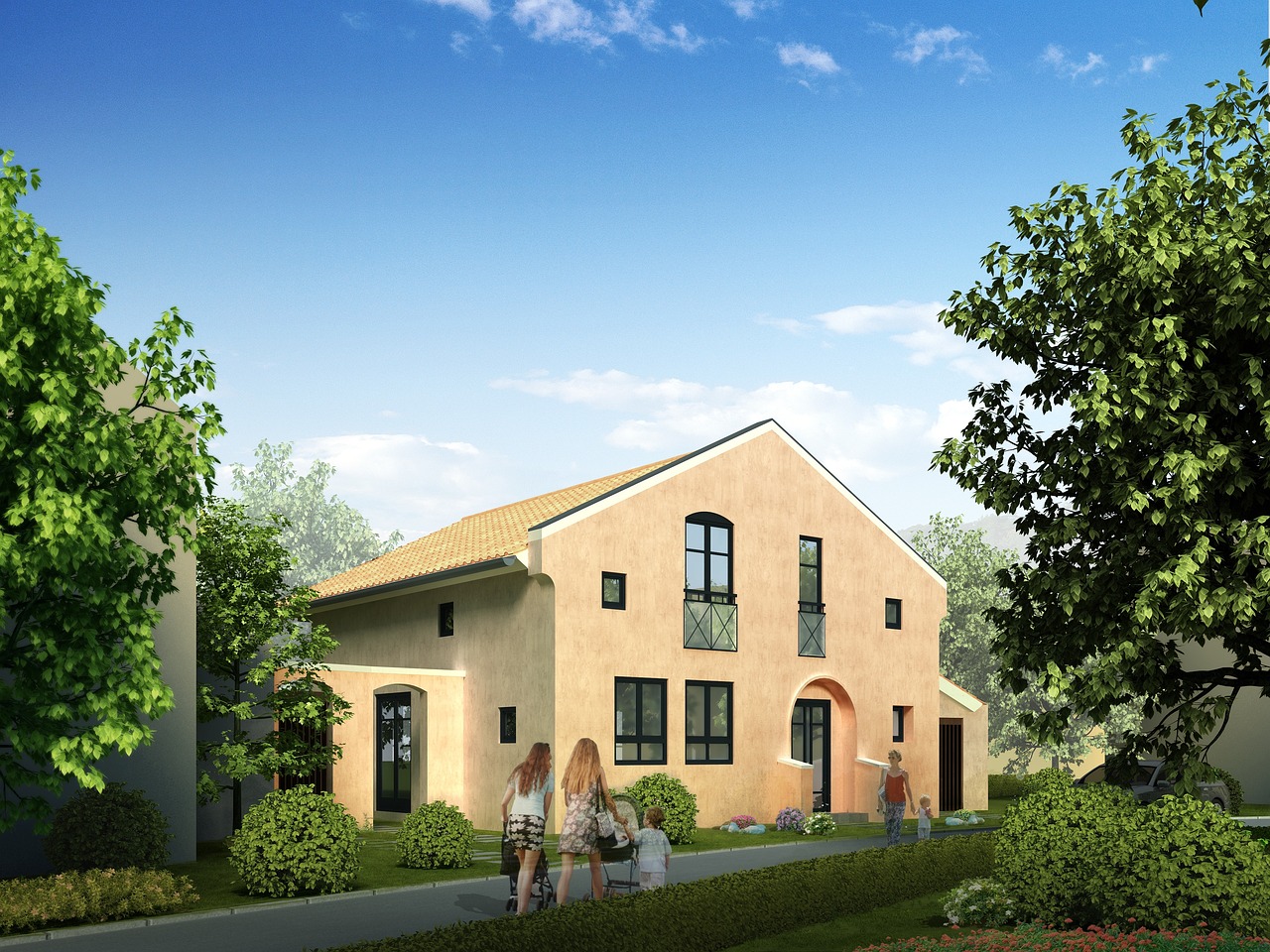
Industry Impact
The impact of GPU rendering, particularly through innovations like Render Token, is nothing short of revolutionary across various industries. Imagine a world where the intricacies of graphics and visuals are not just enhanced but transformed entirely. This transformation is already evident in sectors such as gaming, film, and architecture, where the demand for high-quality visuals is ever-increasing.
In the gaming industry, for example, the introduction of Render Token has allowed developers to create more immersive experiences. With the ability to render complex environments and realistic characters in real-time, gamers are now able to engage with their favorite titles like never before. The graphics are so lifelike that players often feel as if they are stepping into another world. The integration of GPU-powered rendering techniques means that even indie developers can produce high-quality graphics without the need for massive budgets.
Similarly, in the film industry, the use of Render Token has streamlined the rendering process, significantly reducing the time it takes to produce high-quality CGI effects. This efficiency allows filmmakers to allocate resources more effectively, focusing on storytelling and creative elements rather than getting bogged down by technical limitations. For instance, studios can now produce stunning visual effects that were once deemed impossible within tight deadlines, ensuring that audiences are treated to breathtaking experiences.
Architecture is yet another field that has benefited immensely from GPU rendering advancements. Architects and designers can visualize their projects in real-time, making it easier to experiment with designs and materials. This capability not only enhances the creative process but also improves client presentations. Clients can walk through virtual models of their future homes or buildings, providing feedback and making decisions based on a realistic representation of their projects. The following table illustrates the key impacts across these industries:
| Industry | Impact of Render Token |
|---|---|
| Gaming | Real-time rendering for immersive experiences, improved graphics without high costs. |
| Film | Faster rendering of high-quality CGI, allowing for more creative freedom and quicker production times. |
| Architecture | Enhanced visualization of projects, enabling real-time design adjustments and improved client interactions. |
In essence, the influence of GPU rendering through Render Token is not just a technical advancement; it’s a catalyst for creativity and innovation across multiple sectors. As these industries continue to evolve, the role of GPU rendering will only become more pronounced, leading to even greater advancements in visual technology.
Q: What is Render Token?
A: Render Token is a concept in GPU rendering that optimizes resource allocation and management, enhancing the efficiency of the rendering process.
Q: How does GPU rendering differ from traditional rendering?
A: GPU rendering utilizes the parallel processing capabilities of Graphics Processing Units to significantly speed up the rendering process compared to traditional CPU rendering.
Q: What industries benefit from Render Token?
A: Industries such as gaming, film, and architecture are seeing substantial benefits from Render Token, including improved graphics quality and faster rendering times.
Q: Can Render Token reduce rendering costs?
A: Yes, Render Token optimizes resource usage, which can lead to lower operational expenses associated with rendering processes.
Frequently Asked Questions
- What is Render Token?
Render Token is a cutting-edge concept in GPU rendering that focuses on efficient resource allocation and management. It streamlines the rendering process by ensuring that graphics processing units (GPUs) are utilized to their fullest potential, resulting in faster and higher-quality outputs.
- How do GPUs enhance rendering speed?
GPUs are designed for parallel processing, which means they can handle multiple operations at once. This architecture allows for significantly faster rendering times compared to traditional CPUs, making GPUs indispensable for applications requiring high-quality graphics, such as gaming and animation.
- What are the benefits of using Render Token?
Implementing Render Token brings numerous advantages, including cost efficiency and improved rendering quality. It optimizes resource usage, thereby reducing operational expenses while enhancing the fidelity and realism of rendered images.
- Can Render Token be used in real-time applications?
Absolutely! Render Token is particularly beneficial for real-time applications, as it ensures efficient memory management and resource allocation. This leads to smoother performance and higher-quality graphics in environments like gaming or virtual reality.
- What rendering techniques benefit from Render Token?
Render Token can enhance various rendering techniques, including ray tracing and rasterization. Each method leverages the power of GPUs differently, but with Render Token, both can achieve improved efficiency and quality in their outputs.
- What is the future of GPU rendering?
The future looks bright for GPU rendering, with advancements in technology such as AI and machine learning set to revolutionize the field. These emerging technologies will likely lead to even more efficient rendering processes and higher-quality graphics across multiple industries.
- How does GPU rendering impact the gaming industry?
GPU rendering has a profound impact on the gaming industry by enabling more realistic graphics and smoother gameplay. As rendering techniques continue to evolve, gamers can expect increasingly immersive experiences with lifelike visuals and responsive environments.
- Are there any downsides to using Render Token?
While Render Token offers many benefits, some challenges may arise, such as the need for compatible hardware and potential complexities in implementation. However, the advantages often outweigh these drawbacks, especially for organizations focused on maximizing rendering efficiency.

